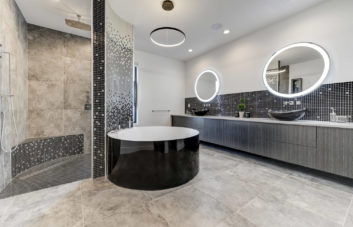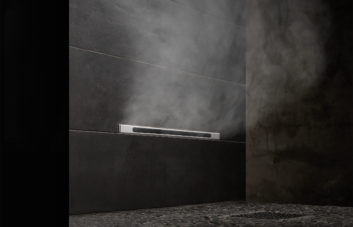When you’re remodeling a kitchen, it can be easy to get carried away with the externals and the larger purchases – countertops, cabinet types, refrigerator, oven, range… the big-ticket items generally hold our attention while the smaller ones take a backseat. Think about it, though: what do you use the most in your kitchen?
For me, the answer’s easy: the sink and faucet get the most use (and abuse!) in my kitchen. Preparing dinner? I wash my hands after touching chicken, defrost frozen ingredients under running water, pile in the non-dishwasher-safe cookware, wash the dishes, wet a paper towel to wipe down the counter… I’m constantly running back and forth to the sink. When I think about it, the sink deserves to be the focal point in the kitchen!
Because there are so many different types, materials, colors, styles, mounts, and sizes, choosing a kitchen sink can be a dizzying and complicated task. Many of us are just tempted to go with a basic sink to avoid the headache. Don’t do it! You’ll regret it once you’re actually using your sink.
We at Quality Bath are here to spare you the anguish of picking the right sink with a comprehensive guide to kitchen sinks, which will appear here in three parts. Read on for Part I!
Part I: Bowl Type
Before you start looking at sinks, you need to examine your sink-use pattern. Are you a gourmet chef who whips up five-course meals (just because it’s Monday) or an occasional cook who subsists on takeout and microwave meals? Are you a solo cook or do you cook in pairs or groups? Do you have a dishwasher and use it regularly? Do you use large cookware or bakeware? What’s your budget?
Number of sinks and/or bowls
More and more homeowners are opting for multiple-basin sinks or separate sinks in the kitchen. This gives one extra space for prep and cleanup and allows more than one person to work in the kitchen at the same time without constantly getting in the other person’s way.
When to choose a single-bowl sink
If your kitchen is small (under 150 square feet), the National Kitchen and Bath Association (NKBA) suggests that you go with a large single-bowl sink to get the most out of your space. If you use large pots or baking sheets on a regular basis, you’re better off with a larger single-bowl so that you can soak and wash them comfortably.
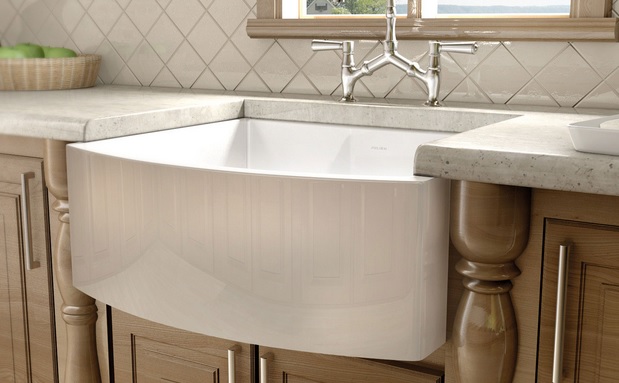
Another point to consider: if you’re on a budget, a single or multi-bowl sink will require only one faucet or faucet set. If you choose multiple sinks, you’ll need to buy multiple faucets!
When to choose a multiple-bowl sink
Even if your kitchen is on the smaller side, you may favor a double- or even triple-bowl sink over a single. With a multiple-bowl sink, one person can be peeling vegetables while another washes his or her hands – without bothering each other! Be aware that multiple-bowl sinks most often feature less space than their single-bowl counterparts, so if you use large cookware, entertain regularly (lots of dishes!), or have non-dishwasher-safe dishes or pots, you may want to choose a larger single-bowl sink or make sure that your kitchen can accommodate a multi-bowl sink with large basins.
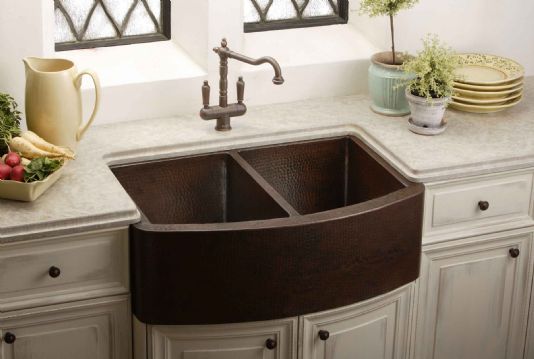
A double-bowl sink doesn’t take up much more space than a single-bowl sink but has the advantages of multiple sinks. Some choose triple-bowl sinks (often with a smaller “salad-prep” sink in the center, but also available with three full basins); just make sure that you have enough space for it.
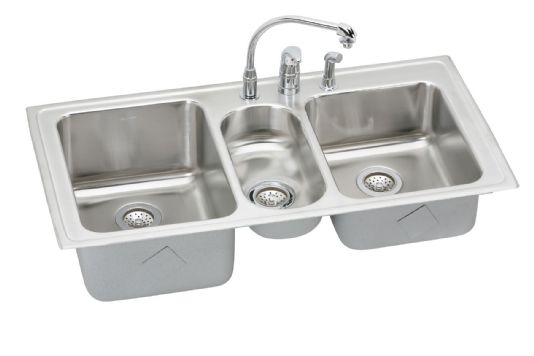
The NKBA suggests at least 36 inches of counter space on one side of the sink and a minimum of 18 inches on the other. The most popular choice in multiple-bowl sinks is the 1-3/4 bowl sink. It’s not as large as a double-bowl but has enough space for dirty dishes and prep work without the worry about dropping your peeled cucumbers into a stack of dirty dishes.
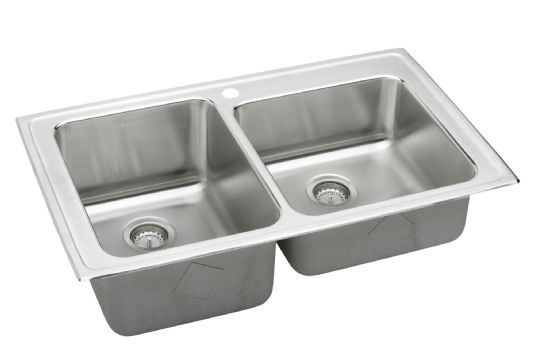
Generally, most sink purchasers opt for one or more single-bowl sinks, except when working with existing cabinetry and plumbing. If you are replacing a sink and have space and plumbing for just one, choose a multiple-bowl sink for the convenience of two sinks without needing to spend on plumbing and installation.
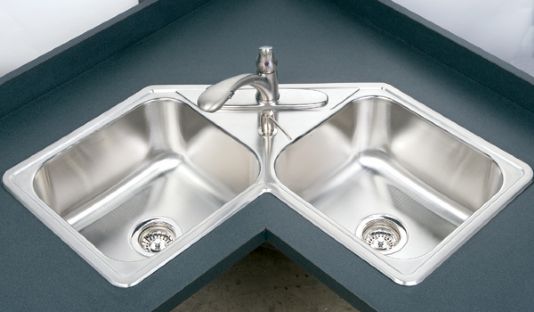
When to choose multiple sinks
If your (large) kitchen is used by two or more people simultaneously and you can afford the extra plumbing and fixtures, pick two (or even three) separate sinks. This will give you the most possible workspace, hold the most dishes, and even free up counter space – if you cook alone but don’t like to wash and prep ingredients in a sink full of dirty dishes, you’ll want to go with multiple sinks. And if you keep a strictly kosher kitchen, two sinks – one for meat, one for dairy – can be incredibly convenient.
Mount
The sink mount is generally chosen according to preference, existing counter configuration, and/or budget.
Top-mount/drop-in
A top-mount or drop-in sink is the easiest to install and is often the most cost-effective. This type of sink is quite literally “dropped in” to a hole in the counter and features a lip running around the top edge to seal the sink in. It can be harder to clean as dirt may build up around the perimeter of the sink. Drop-in sinks are considered impractical and on the way to becoming obsolete; they are typically used when a homeowner is replacing a sink rather than remodeling a kitchen; it fits most existing sink cutouts and is simple to install.
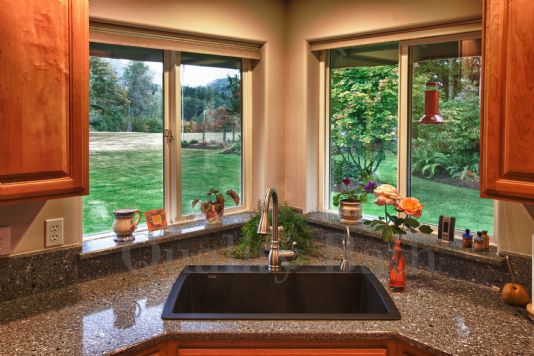
Undermount
An undermount sink is the most popular due to its sleek look and cleanup-friendliness. The sink is mounted underneath the counter – with the lip of the sink attached to the underside of the counter – so that there is no separation between the counter and the sink; crumbs, water, and other debris may be swept directly into the sink.
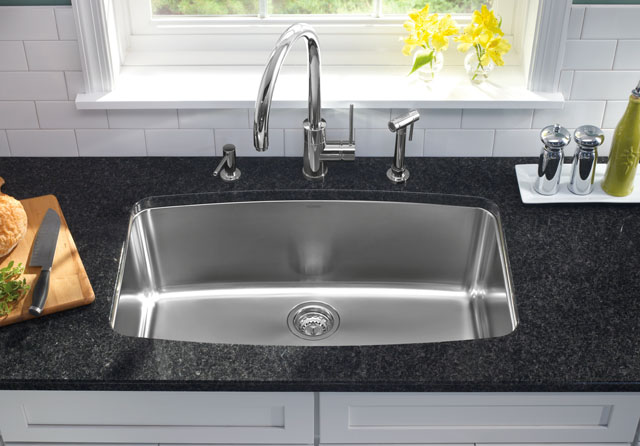
Dual-mount sinks by Mila may be undermounted or top mounted to fit virtually every kitchen.
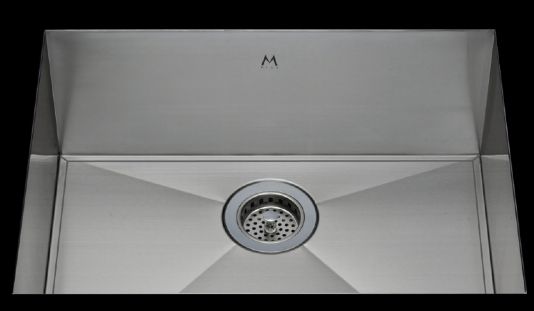
Flush mount
Not to be confused with undermount sinks, flush mount sinks have a visible sink ledge that is completely even with the counter height. While the look of flush mount is attractive, it can be costly and complicated to install as it requires a special mounting kit – it does not simply attach to the counter and lacks the support that drop-in and undermount sinks have.
If you have an existing sink cutout in your counter but don’t want a typical drop-in sink, consider Blanco’s MicroEdge™ sinks; they feature the look of a flush mount sink but are actually drop-in!
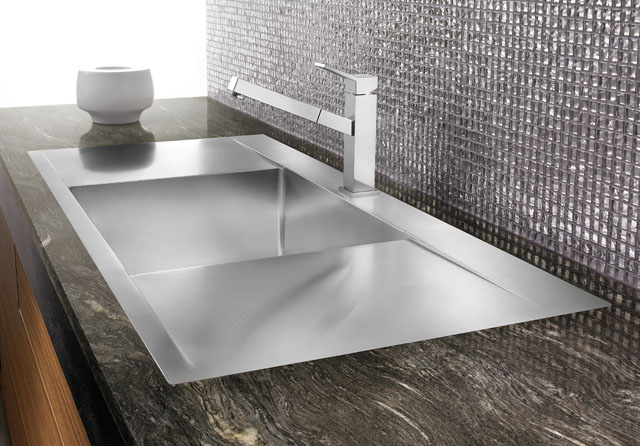
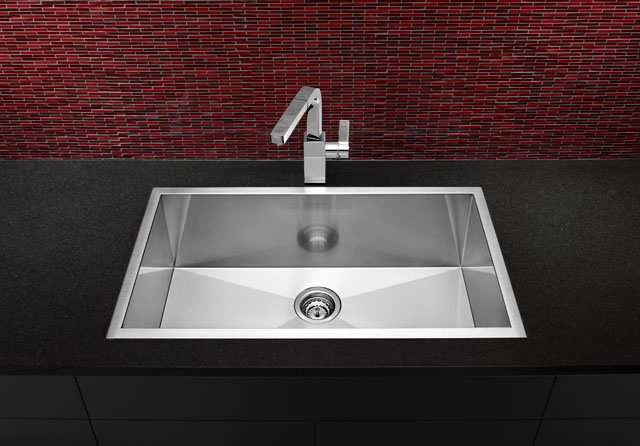
Apron-front/farmhouse
Farmhouse-style (also known as apron-front) sinks are aesthetically beautiful and currently trendy. The front end of a farmhouse sink juts out or is mounted flush with the cabinet top and is often decorative in nature. While farmhouse sinks are traditionally large and single-bowl, they are available in other configurations as well. A farmhouse sink can be dropped in, undermounted on three sides, or flush mounted; just beware that some sit slightly higher than the countertop, resulting in a dirt-attracting seam.
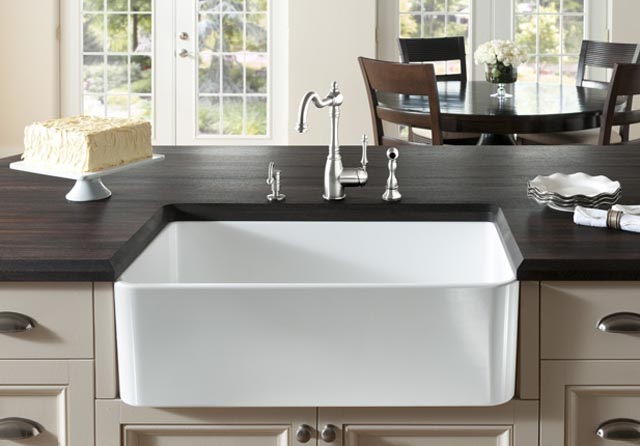
Shape and size
Most sinks are rectangular, but you may also choose square or even round, both of which are not as practical as rectangular. If a sink is being used as a prep sink, bar sink, handwashing station, or mainly for decorative purposes, then a square, round, or unusually-shaped sink may be used, but they are not recommended for regular dish or pot washing.
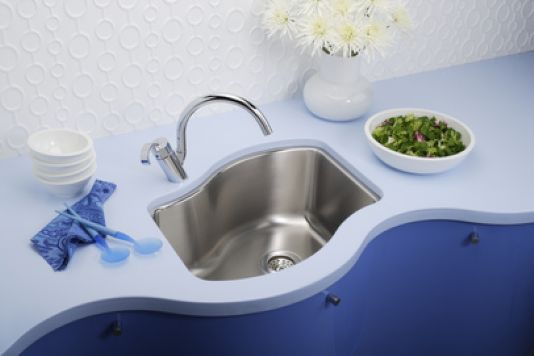
For practicality, easy cleaning, and an aesthetically pleasing sink, choose rectangular with rounded corners. A sink with sharp corners and edges is significantly harder to keep clean.
Consider your counter space when choosing a size. If you’re using an existing cutout, you’ll need to fit the sink to it; if not, pick a width that will accommodate your regular cooking habits without taking up too much space, and make sure to factor in the sink mount (a drop-in will give you more inside space than a same-width flush mount).
Sinks are generally between 6 and 12 inches deep. Most typical sinks measure 7 to 8 inches deep; if you like to stack dishes or use large pots or cookie sheets, you may want to go with a deeper sink. Just don’t go too deep – if you’re short you’ll have a hard time reaching the bottom, and if you’re tall you’ll have to bend down further to get to items on the bottom of the sink. Keep in mind that an undermount sink will be approximately 1-1/2 inches deeper than a drop-in or flush mount.
Miscellaneous
One more consideration: the number of holes in the sink. You’ll need to decide what type of faucet and other fixtures (soap dispenser, drain, garbage disposal, etc.) you want to put into your sink before you make your final decision. We’ll cover faucets and accessories in Part III of this guide.
Now that you’ve chosen your bowl type, you need to pick a material! Stay tuned – we’ll address that next week.


